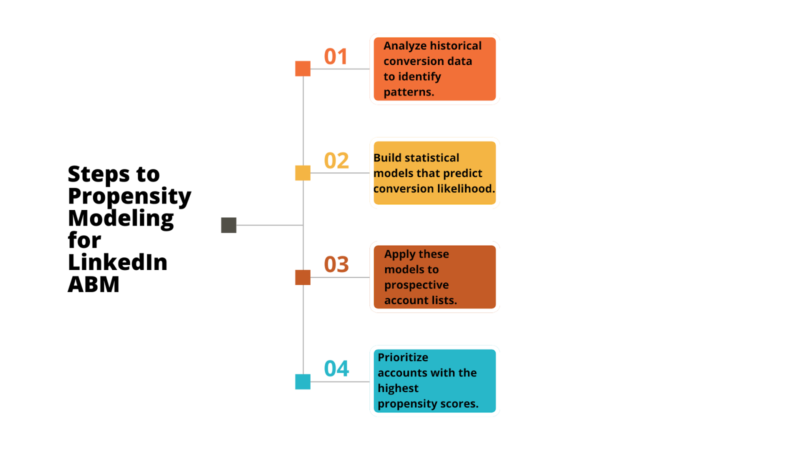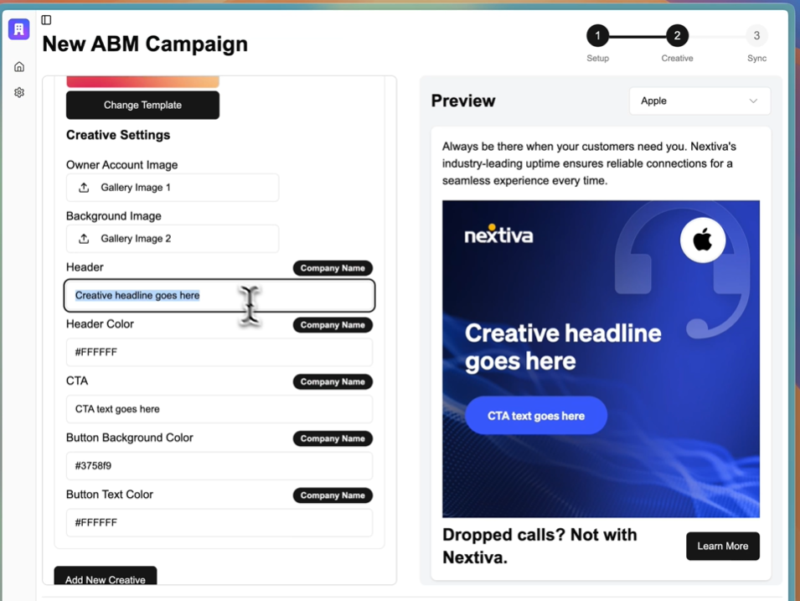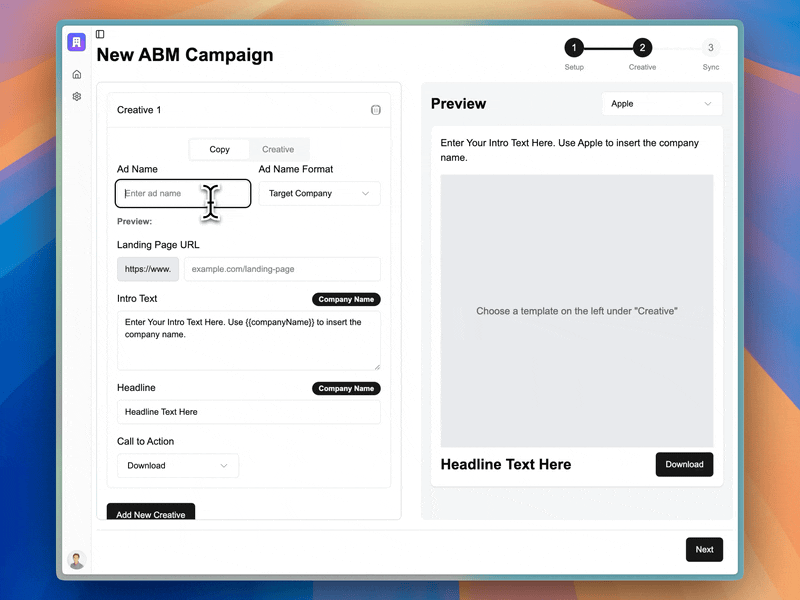Intuition and creativity have their place in account-based marketing, but data and analytics are what genuinely drive exceptional results. This is especially true for LinkedIn ABM, where a scientific approach can transform campaign performance and deliver measurable business outcomes.
While many marketers understand the basic principles of LinkedIn ABM, fewer have mastered the data-driven methodologies that separate high-performing campaigns from average ones. Here’s our guide on the science behind LinkedIn ABM and how to apply these principles to your strategy.
Key Highlights
- Data-driven LinkedIn ABM campaigns outperform intuition-based approaches by up to 40% in conversion rates.
- 97% of marketers report that ABM delivers a higher return on investment than other marketing strategies.
- Predictive analytics can improve target account selection accuracy by 60-70%.
- Multivariate testing of LinkedIn ad elements can increase engagement rates by 25-35%.
- Behavioral analysis of target accounts reveals optimal engagement patterns and timing.
- AI-powered tools like Karrot.ai use machine learning to optimize personalization and targeting.
- Closed-loop measurement systems provide scientific validation of campaign impact.
- Continuous experimentation and refinement based on performance data drives ongoing improvement.
TABLE OF CONTENTS:
The Scientific Method Applied to LinkedIn ABM
A significant performance gap exists between average ABM campaigns and those that take a truly scientific approach.
The scientific method—observation, hypothesis, experimentation, analysis, and refinement—provides a robust framework for LinkedIn ABM excellence.
ABM marketers can apply the scientific method to their campaigns, moving beyond intuition-based marketing to create data-driven strategies that consistently deliver results.
The Performance Gap
Recent research reveals the performance differential between data-driven and intuition-based approaches. For example, data-driven LinkedIn ABM campaigns outperform intuition-based approaches, driving 40%-60% more conversions.
Data-driven campaigns increase conversions because marketers replace assumptions with evidence and create a continuous improvement cycle based on empirical results.
Step 1: Data-Driven Account Selection
The foundation of scientific LinkedIn ABM is selecting target accounts based on data rather than intuition. Here’s how it’s done.
Predictive Account Scoring
Implement a predictive account scoring model that incorporates multiple data points, such as this one:
| Data Category | Example Data Points | Predictive Value |
|---|---|---|
| Firmographic | Industry, size, growth rate | Medium |
| Technographic | Current tech stack, recent implementations | High |
| Engagement | Website visits, content interactions | Very High |
| Intent | Research activities, competitor interactions | Very High |
| Fit | Alignment with ICP, product relevance | High |
You can create a scientific account selection model that significantly outperforms intuition-based targeting by weighting these factors based on their correlation with conversion likelihood.
Companies that use automation achieve a 3.1% higher revenue growth rate than organizations that don’t. This improvement stems from focusing resources on accounts with the highest statistical likelihood of conversion.
Propensity Modeling

Advanced LinkedIn ABM programs use propensity modeling to identify accounts most likely to convert. Follow these steps to apply the same principles to your campaign:
- Analyze historical conversion data to identify patterns.
- Build statistical models that predict conversion likelihood.
- Apply these models to prospective account lists.
- Prioritize accounts with the highest propensity scores.
Predictive analytics can improve sales forecasting accuracy by 60-70%, ensuring your LinkedIn campaigns reach the accounts most likely to respond positively.
Step 2: Scientific Audience Development
Beyond account selection, scientific LinkedIn ABM requires data-driven audience development. Here’s more information on this.
Role-Based Influence Mapping
Use different types of data to identify the most influential roles within your target accounts, such as:
- Analyze historical deal data to identify common decision-makers
- Map the typical buying committee structure for your solution category
- Identify the roles most likely to engage with LinkedIn content
- Determine the optimal sequence for multi-stakeholder engagement
This evidence-based approach to role targeting ensures your campaigns reach the stakeholders most likely to advance the buying process.
Behavioral Segmentation
Move beyond basic demographic and target behavioral segmentation. Here are some example behaviors to target:
- Engagement-based segments: Group users based on past interaction patterns.
- Content preference segments: Categorize by demonstrated content interests.
- Buying stage segments: Segment based on behavioral indicators of the buying stage.
- Influence pattern segments: Group by how they influence others in the organization.
Companies that implement segmentation in their LinkedIn ABM campaigns achieve 14.31% higher open rates and 101% higher clicks than those that don’t.
Step 3: Systematic Creative Optimization
Scientific LinkedIn ABM applies rigorous testing methodologies to creative development. Here’s how it works.
Multivariate Testing Framework
Implement a structured testing approach for creative elements, such as:
Test Framework: [Headline Variables] x [Image Variables] x [Copy Variables] x [CTA Variables]
This framework allows you to systematically test creative combinations to identify the highest-performing variations for different account segments.
Element-Level Performance Analysis
Rather than evaluating ads as complete units, analyze the performance of individual elements. When doing this, ask yourself these questions:
- Which headline structures drive the highest click-through rates?
- Which visual approaches generate the most engagement?
- Which messaging themes resonate most strongly with different roles?
- Which call-to-action formats produce the best conversion rates?
This granular analysis allows you to build a performance database of creative elements to inform future campaign development.
Step 4: AI-Powered Personalization
The most advanced LinkedIn ABM campaigns use artificial intelligence to optimize personalization. Here are the best types of tools to try.
Machine Learning Personalization

Tools like Karrot.ai leverage machine learning to:
- Analyze patterns in account engagement data
- Identify which personalization elements drive the most decisive response
- Automatically optimize creative variations based on performance
- Scale personalization across thousands of accounts without manual intervention
AI can boost personal product recommendations by 80%, demonstrating the power of data-driven personalization at scale.
Algorithmic Content Matching
Scientific LinkedIn ABM uses algorithms to match content with audience segments in these ways:
- Tag content assets with multiple attribute categories
- Analyze engagement patterns to identify content preferences
- Use machine learning to predict which content will resonate with which segments
- Automatically serve the optimal content to each target account and role
This data-driven approach to content matching ensures each audience segment receives the most relevant content based on statistical likelihood of engagement rather than marketer assumptions.
Step 5: Engagement Pattern Analysis
Scientific LinkedIn ABM involves detailed analysis of engagement patterns to optimize campaign timing and sequencing. Continue reading to understand how it works.
Temporal Engagement Analysis
Use these examples to analyze when target accounts are most likely to engage:
- Day-of-week patterns: Identify which days generate the highest engagement.
- Time-of-day patterns: Determine optimal posting times for different segments.
- Frequency response curves: Find the ideal contact frequency before diminishing returns.
- Sequence timing: Identify optimal spacing between sequential messages..
Engagement Sequence Optimization
Use this data to determine the optimal sequence of content and messaging:
- Analyze which content types work best as initial engagement points
- Identify the most effective follow-up content based on initial interaction
- Map the content sequences that most frequently lead to conversion
- Implement automated sequence optimization based on real-time response
This scientific approach to content sequencing creates personalized journeys based on observed behavior rather than predetermined paths.
Step 6: Closed-Loop Measurement and Attribution
Scientific LinkedIn ABM requires sophisticated measurement approaches that connect campaign activities to business outcomes. Here are some examples to note.
Multi-Touch Attribution Modeling
Implement advanced attribution models that accurately distribute credit across touchpoints, such as:
- Markov chain models: Use probability theory to determine the influence of each touchpoint.
- Regression analysis: Identify statistical relationships between touchpoints and outcomes.
- Machine learning attribution: Apply AI to uncover complex attribution patterns.
- Controlled experiments: Use test and control groups to measure incremental impact.
Incrementality Testing
Follow these steps to conduct controlled experiments to measure the true incremental impact of LinkedIn ABM:
- Create matched test and control groups of target accounts.
- Expose the test group to LinkedIn ABM campaigns while withholding from the control group.
- Measure the performance difference between groups.
- Calculate the actual incremental lift generated by the campaign.
Controlling two test groups offers the most scientifically accurate results by isolating the effects of one group from the other.
Step 7: Continuous Experimentation and Optimization
Scientific LinkedIn ABM is never “complete”—it involves ongoing experimentation and refinement. Here are some campaign experimentation methods to add to your campaign.
Structured Experimentation Program
Implement a formal experimentation framework, such as:
- Hypothesis development: Create testable hypotheses based on data and observations.
- Experiment design: Develop controlled tests with clear variables and metrics.
- Statistical validation: Apply appropriate statistical methods to validate results.
- Implementation planning: Translate findings into actionable campaign changes.
Companies with formal testing programs report a 5-8x higher marketing ROI than those using ad hoc optimization approaches.
Algorithmic Budget Allocation
Follow these steps to use data-driven algorithms to optimize budget allocation:
- Track performance metrics across all campaign elements and segments.
- Calculate the marginal return on investment for each variable.
- Automatically shift budget toward the highest-performing elements.
- Continuously refine allocation based on real-time performance data.
This scientific approach to budget management ensures resources are allocated to the highest-impact opportunities based on empirical evidence rather than predetermined allocations.
Case Study: Tech Company Transforms Results with Scientific ABM
A B2B software company implemented a scientific approach to their LinkedIn ABM program targeting 500 enterprise accounts. By applying data-driven methodologies, they:
- Developed a predictive account scoring model that improved target account selection by 64%
- Implemented multivariate testing that increased creative performance by 37%
- Used Karrot.ai to optimize personalization based on engagement data
- Applied machine learning to content matching and sequence optimization
- Implemented closed-loop measurement with multi-touch attribution
The results demonstrated the power of scientific LinkedIn ABM:
- 187% increase in target account engagement
- 64% improvement in MQL-to-opportunity conversion
- 42% reduction in cost-per-acquisition
- 3.2X return on ad spend
- $14.7M in influenced pipeline within 6 months
Best Practices for Scientific LinkedIn ABM
To maximize the effectiveness of your data-driven approach, follow these proven best practices:
- Start with a precise measurement framework before launching campaigns
- Establish a single source of truth for performance data
- Build a culture of hypothesis testing rather than assumption-based decisions
- Implement robust data governance to ensure quality and consistency
- Balance automation with human oversight to catch anomalies and opportunities
- Document methodologies to ensure consistent application over time
- Continuously expand your data sources to improve predictive accuracy
The Science Behind LinkedIn ABM: Apply These Principles to Your Campaign
Using data and analytics in ABM will make your business more competitive. But what’s the science behind LinkedIn ABM? Instead of intuition, more ABM marketers should use scientific principles toward account selection, audience development, creative optimization, and measurement approaches.
The key to optimizing ABM for data-driven approaches is replacing assumptions with evidence and creating a continuous cycle of experimentation and refinement based on empirical results. Use AI-powered tools like Karrot.ai to enhance your data-driven approach through machine learning and automated optimization.
Marketers can combine scientific methodologies with advanced technology, such as predictive analytics, to create LinkedIn ABM campaigns that deliver exceptional, measurable results.




